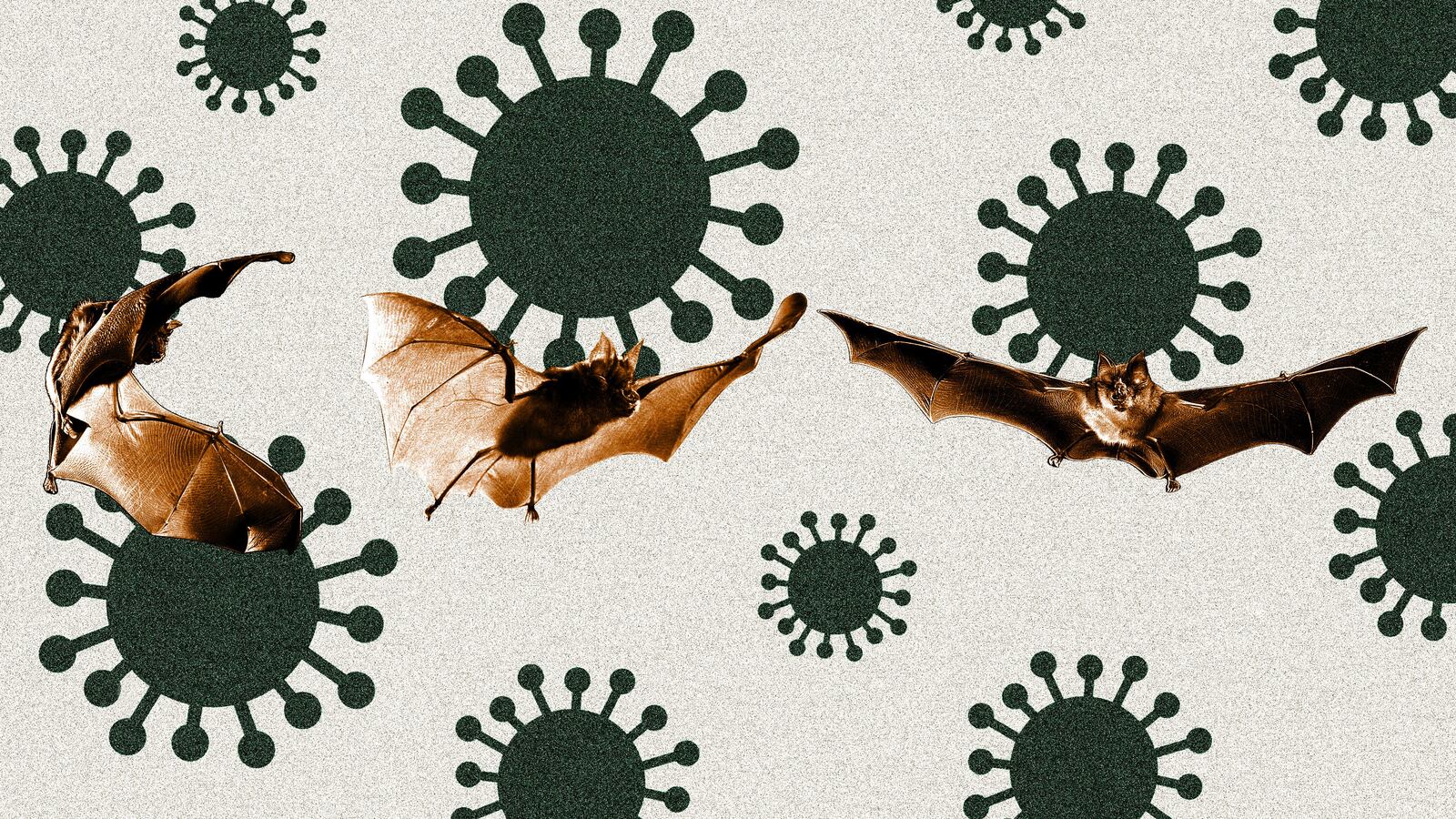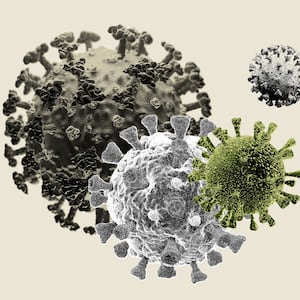The COVID-19 pandemic isn’t over. In fact, it shows signs of lingering for, well, a long time.
But even as politicians and health authorities struggle with how, if at all, to keep addressing the current pandemic, scientists are already anticipating the next one. They’re scouring the planet for animal viruses that, like SARS-CoV-2, could leap to the human population and cause serious disease on a global scale.
They just found one. And it’s nasty.
In 2020, a team of Russian scientists collected a few horseshoe bats in Sochi National Park in southern Russia. The Russians identified, in those bats, a new virus they called Khosta-2. Behaviorally, the virus seemed to have a lot in common with SARS-CoV-2.
Two years later, a separate team—including scientists from Washington State University and Tulane University—tested Khosta-2 along with another newly-discovered Russian bat virus, hoping to determine whether they’re capable of infecting people. And, if so, whether our antibodies stand any chance of stopping them.
The initial results, which the team described in a new peer-reviewed study that appeared last week in the science journal PLOS Pathogens, are worrying. The second bat virus didn’t seem all that infectious. But Khosta-2, on the other hand, took a liking to human cells.
“We tested how well the spike proteins from these bat viruses infect human cells under different conditions,” the scientists wrote. “We found that the spike from the virus Khosta-2 could infect [the] cells, similar to human pathogens using the same entry mechanisms.”
Equally troubling, Khosta-2 proved “resistant to neutralization by serum from individuals who had been vaccinated for SARS-CoV-2.” In other words, our bodies’ defenses against COVID-19 might not protect us from a hypothetical disease caused by Khosta-2.
The implications are clear. We’d need better antibodies to beat Khosta-2. “Our findings highlight the urgent need to continue development of new, and broader-protecting … vaccines,” the scientists behind the new study wrote.
Like SARS-CoV-2 and the hundreds of other so-called sarbecoviruses, Khosta-2 uses that spike-shaped protein on its surface to grab onto and infect a host’s cells. But the vast majority of sarbecoviruses can only infect the species that are their usual hosts. Bats, typically.
What makes Khosta-2 special is that, like SARS-CoV-2, it can also infect people—in lab conditions, at least. What makes Khosta-2 particularly scary is that it appears to shrug off the antibodies that currently work against SARS-CoV-2. Again, in lab conditions.
There’s a lot of uncertainty here. The Tulane-Washington State University team didn’t try to infect actual human beings with Khosta-2. To test infection, they exposed the Russian bat virus to human cell cultures. To test our potential for immunity, they exposed the virus to COVID antibodies. “We can only test what we can test,” Michael Letko, a Washington State University virologist and one of the study’s authors, told The Daily Beast.
But the immunity test in particular wasn’t necessarily representative of how our immune systems actually work—something the study’s authors readily admit. “The immune response in an individual will be multi-faceted, encompassing innate and adaptive responses and cell-mediated immunity,” Letko said. “We only looked at antibody neutralization in this study.”
So don’t panic quite yet. There are a lot of animal viruses, many of which are closely related to SARS-CoV-2 or at least use some of the same biological mechanisms to infect their hosts. Most have never infected a human being—and might not even be able to do so in real-world conditions outside of a lab.
With further study, Khosta-2 could end up as a scientific red herring. A virus that looks a lot scarier than it actually is. “We have a hard time predicting accurately which ones will actually crack the code to become efficient human pathogens,” James Lawler, an infectious disease expert at the University of Nebraska Medical Center, told The Daily Beast.
But there’s no denying that, as the human population expands and chops down more and more forests for farms and cities, it’s coming into close contact with more and more exotic animal species. Each encounter is an opportunity for an animal virus to infect people—a process scientists call zoonosis.
“Generally, we might be able to say zoonosis risk is increasing for many types of viruses,” Letko said. Consider the recent history of infectious diseases in the human population. SARS-CoV-2 is just the latest animal virus to leap to people, after the bird flu virus, SARS-CoV-1, MERS and others.
There’s every reason to fear the pandemic after COVID-19. Maybe Khosta-2 will be the virus that gets us next. Maybe it’ll be some other pathogen. “The more that we disrupt ecosystems and allow new mixing of species and viruses, the more we spin nature’s roulette wheel,” Lawler said. We need to keep our eyes open—and prepare.
The most useful thing we can do, besides stop chopping down the forests where bats and their viruses live, is develop vaccines that work against a wide range of similar pathogens. There are several universal coronavirus vaccines in development that scientists hope will work against current and future variants of SARS-CoV-2.
The same “pan-coronavirus” vaccines might also work against sarbecoronaviruses such as Khosta-2, Letko said. We can’t say for sure until we test them. But as COVID funding withers, intensive testing could slip farther and farther into the future.
And if these universal vaccines don’t work against Khosta-2, we might need entirely new vax formulations, ones that are even more widely effective. Barton Haynes, an immunologist with Duke University’s Human Vaccine Institute who is developing a new pan-coronavirus vaccine, told The Daily Beast the likeliest outcome would be a mix of separate jabs that, taken together, could offer broad protection against a whole host of sarbecoronaviruses.
In that case, we might have a race on our hands. Can we develop these brand-new vaccines faster than some new sarbecoronavirus—whether Khosta-2 or some as-yet-undiscovered cousin—goes zoonotic and makes the leap to the human species? And can we get enough people to actually get the vaccines in time?








